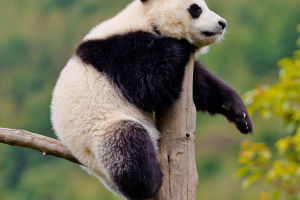Butterflies are insects that, depending on their species, can amaze humans with their incredible colors, but did you know? Monarch butterflies? They are known to live in North America, although when the migration season arrives they do so in large flocks, join us to learn more about this fascinating butterfly.
The Monarch butterfly, the most common butterfly in North America, travels 4,000 kilometers across the continent each year from south to north to return to its northern homeland.
A generation of monarch butterflies cannot fly that long, and their fathers spend their short lives on the way home, handing the burden of returning home to their children, who in turn pass it on to their grandchildren. Each generation is one step closer to home, and each generation continues until the fifth generation of descendants finally returns home, spending their precious but short summers perched in the same large tree where their ancestors spent their time.
The Monarch butterfly, with its bright orange wings outlined by a black stripe, also goes by the name of the Black-veined Golden-spot butterfly. These are butterflies that live for only a few weeks, are usually born and raised locally, and never leave their home for the rest of their life.
The Monarch butterfly, however, is an anomaly in the butterfly flock. Like a high-flying bird, it has two homes nearly 10,000 miles apart and travels long distances each year to spend the winter in the south and the summer in the north.
The discovery of the monarch butterfly's migratory journey is an old story. Long ago, it was discovered that monarch butterflies in Canada would set off south after the summer, where did they fly to? No one can answer that, but many people would like to know the answer.
The Monarch butterfly is a butterfly with a long-distance migration habit. So what exactly influences the habits of this species? Experts explain that as the Marbled Murrelet adapted to the cold climate of northern America and spread to the United States and Canada, the Monarch followed in the Marbled Murrelet's footsteps to the north.
But the cold climate in the north prevented the flowering plants from flowering all year round, and the lack of food and harsh climate forced the monarch butterflies to return to Mexico with the cold, cold winds. The annual flowering and the alternating heat and cold create the migratory habits of the monarch butterfly.
Although the monarch butterfly is not a protected species, the population has declined by 80% in the last 10 years. Although Canada, the United States, and Mexico have all enacted laws to protect the monarch butterfly's habitat, and have individually checked for fungus, viruses, parasites, and forest cover in their habitats in Mexico, and enacted laws to protect them, they still do not seem to have been effective in halting the population decline.
When it comes to the conservation of monarch butterfly species it is important to mention a pesticide, glyphosate. This is a very highly effective herbicide that does not directly kill the monarch butterfly but does discourage the growth of the marbled murrelet. Of course, glyphosate is not the only herbicide that will inhibit the growth of Mallee, all phosphorus containing herbicides will inhibit the growth of Mallee.
Therefore, the majority of scholars nowadays believe that it is important to restore the population of the marbled murrelet first to see if the decline in the population of the monarch butterfly can be reversed. Will the monarch butterfly be happy or sad? We will have to wait and see what the scholars come up with.


